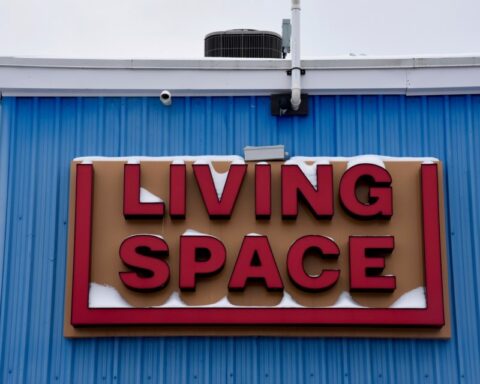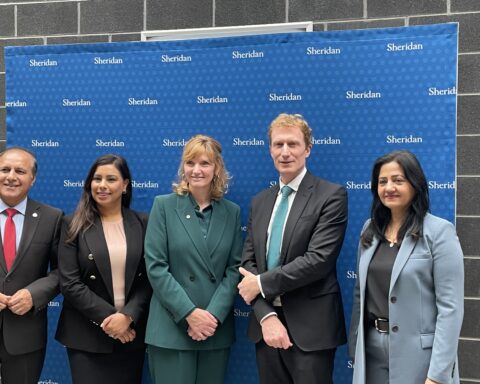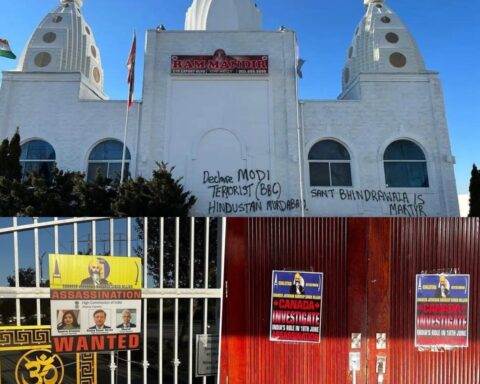India’s second lockdown has increased rural poverty that could derail global health and economies if it is not contained at once, say grassroots frontline organizations in Canada, the United States and India.
The Gandhian organizations have collaborated to build awareness of rural devastation through a series of webinars, the first of which was held in May.
“Aid is coming into India, but it’s a disaster because it is not properly distributed,” says Jill Carr-Harris, the Canadian co-founder of the non-profit in India who is now in Toronto to alert Canadians.
“The second pandemic wave is much more virulent. Urban volunteers fear going into villages,” says Carr-Harris, who is training Indigenous women to volunteer as frontline workers.
Landless Indigenous Tribes Worst Hit
Economists report that India’s COVID crisis is a problem for the whole world. The more the virus spreads, the more it may create variants that could reduce vaccine effectiveness and infect other countries.
“If we don’t help India, I worry about an explosion of cases around the world,” says Dr. Ashish Jha, dean of Brown University School of Public Health in a U.S. news article.

India’s second lockdown in 2021 has led to mass job losses that has doubled the number of the poor to 134 million, reports the Pew Research Center.
“Poverty is the greatest crime on humanity,” says Rajagopal P.V., co-founder of Carr-Harris non-profit. He blames political mismanagement for the escalation.
“Eight per cent of India’s poor are Indigenous tribes” he says.
“Tribal people [such as landless ‘Adivasis’] are a forest-dependent community. In the name of industrialization and tourism, the government has pushed them out of their natural habitat [into unfertile lands and remote interiors.] Now, they are asking them to lockdown and sustain themselves after taking away everything they had. How do you expect them to find food and medical supplies?”
In every crisis, women and children are worst affected, says Carr-Harris.
“We can’t rely on teams coming from outside [to villages] anymore. A lot of our workers have COVID,” she says. “We realized that women workers within the villages could do the best job.”
But scarcity of vaccines and severe food shortages leading to pandemic spread is a growing concern.
Challenges of Rural Relief
“Urban frontline workers are educated professionals. Rural volunteers need education and training before they can volunteer,” says Anuj Jain, founder of a social organization in Nova Scotia.
There is no road access or railway tracks in remote regions, which creates transportation difficulties.
“Oxygen is sent in large quantities, but it doesn’t reach those in need. As a result, 38 per cent of Indigenous tribes are COVID positive in states such as Manipur,” he explains.

“India handled the first wave well. The second wave caught the health system unaware,” says Tanjina Mirza, vice president of Plan International Canada, which assists the grassroots through their local divisions.
“How do you improve healthcare when there’s no food? How do you socially isolate [patients] in one-room huts shared by 10 people? How do you sanitize where water is a luxury?”
Community Response in Canada
Anee Luk, a volunteer in Toronto feels “humbled” about the response from Canadians following the first webinar.
“All diasporas have come together to support [India],” she says.
Local and global corporations such as East Coast Credit Union (Nova Scotia) and Microsoft are collaborating with the Gandhian organizations to offer their support and solidarity.
Nicholas Wedgewood, who works for the Ontario Ministry of Economic Development sums up the reason behind his independent support.
“It [collaborative community drive] not only provides money to people who are hard-up because of the situation in India but also gives them work and feeds people,” he says. “All of those things are important.”
Collective Convenor & Communications Planner - Joyeeta Ray is a multimedia journalist, internationally awarded digital content specialist, and children’s books author, based in Toronto. Born in India, she brings over two decades of advertising and journalism experience across seven countries to Canada. Joyeeta started her journalistic career in Jakarta, led an editorial team in Bangkok, and is a student of Multimedia Journalism from The University of Toronto. She is an enthusiastic NCM-CAJ member, actively involved in amplifying new Canadian voices as NCM’s Convenor, Communications Planner, Mentor, and Reporter.






India is the ONLY Nation in the world,which HAS USED COVID as an OPPORTUNITY,to do an NMP,Privatise Ports,and raise GST and ED,on Fuels and Edible oils – for its fiscal management, which would have been UNTHINKABLE,IF COVID were not there !
THERE IS A NEW ROPE TRICK BY MODI AND IT IS CALLED NMP !
NMP is a privatisation and disinvestment,via an operating and/or financial lease.The purpose is NOT to raise funds – as else,the idle/surplus/loss making assets could have been quarantined, in a SPV and sold off,or a JV partner brought in.The purpose is NOT to improve efficiency,as else the assets could have been transferred to a toll operator on a pure O&M Contract (SO NO LEASE CHARGES),with a bonus for INCREMENTAL EFFICIENCY.
The Purpose of the NMP,is also NOT to cut staff costs,as the GOI is the owner of the asset,and so,the staff cost is a sunk cost – who will remain a burden on the GOI,or take a VRS,or hopefully die over the lease tenor.
The Purpose of the NMP,is NOT to increase bank credit,as banks would lend better to a SPV, which had ownership of the asset.W/o an asset, a bank will lend on Balance sheet and Guarantees of Promoters of the operating lessee – wherein THERE WILL NO MORTAGEABLE SECURITY.Banks cannot possess the GOI ASSET, if the lessee goes bust.Of Course,a new lessee can step in – but if the first lessor could not make a profit on the asset,the reasons for the losses,are beyond redemption.
The lessors will obviously make a neat profit (for the NON-MANUFACTURING AND NON PRODUCTION ASSETS – like Roads,Hydro,Bridges,Stadiums etc.,) with the aid of bank leverage, and on the expiry of the lease period,will buy the asset – after a ICB.By then,the banks would have assessed,tested and appraised the technical and managerial competency of the lessor – and so.the Banks and PEs etc.,will easily fund the acquisition.In the alternate the GOI could takeover over the property and land developments (to collect the rentals etc.or do another lease of the same) by the lessor (after the lease expiry) , and just hand over the core toll asset to a ICB Buyer.
The Manufacturing assets leased under the NMP,(like Thermal Power plants etc.) will become junk in 20 years and also technically obsolete,and so the GOI will have no use in its repossession – except to set up a refurbished plant and sell of the surplus land.In 20 years,the land used for the same manufacturing capacity will fall by at least 50%,and so that surplus land will be windfall to the GOI,and the GOI will be glad to let the lessor acquire the plant and take a bank loan to refurbish it.
The 1st Purpose of the NMP,is to SELL the asset BUT BY NOT CALLING IT A SALE – in law.If they had sold the asset,they would receive a MUGH HIGHER Valuation – but that has a huge POLITICAL COST and the CONTINGENCIES OF TIME.
The 2nd Purpose of the NMP,is to MONETISE THE LAND associated with the asset,w/o SELLING THE LAND,and outsourcing this SCAM,to a private person,so that the GOI is free of the taint and scams in the land monetisation.For example, in a toll road,the jackpot will come in the property development/promotion/ adverisement/drive in theatres/malls etc.,on the land on the ROW of the Road,and other areas.If the GOI does it,there will be scams – and so,it is outsourced to the private party – who will make a killing,as his tenor is 25 years,and the GOI is getting a Pay down on Day 1 (with no comparable benchmark).The same applies to GOI stadiums,libraries,buildings,Railway stations…………………The core driver of the monetisation streams is the LAND (even for ports).
The 3rd Purpose of the NMP,is to provide a risk free lending option to Indian Banks,as the Banks are lending to the GOI,VIA THE OPERATING LEASE LESSOR (as the bank will fund a part of the lease payment to the state).If the lessee defaults,some other lessor will step in.
The 4th Purpose of the NMP,is to provide an option to the banks to BLOAT the Bank Balance Sheet,TO REDUCE THE NPA %
The 5th Purpose of the NMP is to circulate credit across the supply chain of these revived moribund assets – in the hope that some money flows to the NPA entities – so that they repay the loans.
The 6th Purpose of the NMP,is to boost the fiscal revenues of the GOI,as new business streams will be created across the supply chain – but more importantly,the leased assets were with the GOI,in non taxable units or loss making units.Now with these assets in a lessee entity – the lessee will run the assets to make a profit – and that will be taxed,w/o any tax shelters,as the assets were constructed some time ago.
The 7th Purpose of the NMP is to use 5% of the Cash raised to do a VRS and kick out all the GOI staff on the leased assets – with an option to them,to ne hired by the lessee.
If this Titanic sails,then next will be the surplus Military and CAPF land – which will be worth USD 100 Billion at the minimum
In essence,a road or a port,post operations,can be run better by a private lessee ONLY BY CUTTING COSTS AND IMPROVING OPERATIONAL EFFICIENCIES.But this incremental PROFIT by the lessee cannot JUSTIFY the NMP UPFRONT PREMIUM.The PREMIUM IS justified ONLY by UNLOCKING THE POTENTIAL OF THE LAND COMMERCIALISATION AND PROPERTY DEVELOPMENT OF THE LAND AND PROPERTY USP, EMBEDDED IN THE GOI ASSET.
The GOI may be able to Unlock the embedded land value,on its own – but that will come with scams – and so,it is OUTSOURCED -wherein the netas will pull all the strings – but the axe will fall on the lessee.
Indian Duds do not realise that GOI does not care for GOI jobs,or Quotas in Jobs.There is no money for these fantasies.That India died with the Chaiwala as PM.dindooohindoo